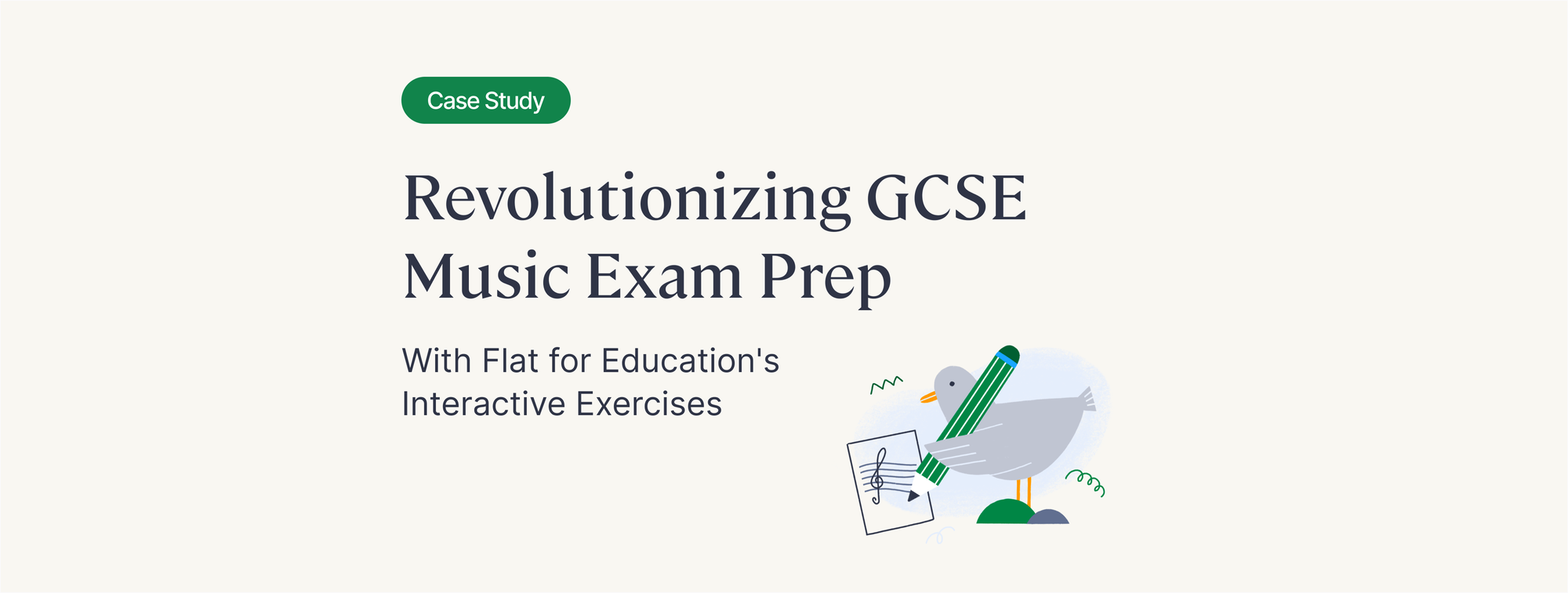At Flat for Education, we're passionate about innovating music education. Our conversation with Jo Sharkey, a pioneering head of music at Finham Park, UK, unveils how Flat for Education's interactive music exercises are revolutionizing preparation for the nationwide GCSE exams. In this article, we aim to share all of our learnings so that you can apply them to your own program.
Flat for Education: Your Ultimate Music Teaching Assistant
Flat for Education is not just a tool; it's a music teacher's best ally, designed to enhance the teaching and learning experience. With its user-friendly music editor, comprehensive music theory worksheets, engaging composition tasks, and a robust Resource Library, it seamlessly integrates with classroom technology, making music education more accessible and enjoyable. With its mix of powerful features and ease of use, it’s no wonder why over 10,000 teachers and 2 million students worldwide love Flat for Education.
✨ If you do not have a Flat for Education account yet, sing up now and unlock a month free trial!
Beyond the Classroom: Breaking Free with Technology
While computers have been present in many music classrooms for years, they came with a significant drawback: their work was locally stored only on their school's computer. Students had to physically be in the classroom—and sitting at the same computer—to access their work.
Jo Sharkey saw some benefits in that era, but it was clear that the problem of how to fully engage students using technology still needed to be solved.
“We’d use GarageBand, for example. But everything was linked to the in-class computer and saved locally. The students had to be at the same machine all the time, it was a big logistics battle.”
The COVID-19 pandemic turned a lingering problem into one that absolutely needed to be solved. Faced with the challenges of remote learning, it was time for Flat for Education! And Jo quickly saw that the software was useful in ways that went far beyond the particularities of the pandemic.
“Obviously there was the need for remote teaching with COVID-19, the ability to work outside of class was huge. But that flexibility has been important since we’ve been back in school as well. Flat for Education gives us all so much freedom: even away from school, students see that I’m with them online, I’m giving feedback. It’s quite brilliant.”
💡 Learn how to provide realtime feedback to your students in the guide below:

This ability to move seamlessly between in-class work and homework is particularly crucial since the standard UK schedule is structured in such a way that Jo only sees each class in person for one hour per week. Occasionally, a given class will meet twice on back-to-back days, only regrouping in the classroom again two weeks later.
Engaging Students in Musical Mastery
The past few years have seen Jo expanding her use of Flat for Education, now using it with students ranging from 11-17 years old. For each grade level, she identifies the core theoretical and practical aspects of music that the students need to develop in order to succeed in their national GCSE exams, typically taken around the age of 16.
She then creates long-term projects that help students learn music theory and put it into practice. Once she has a guiding topic and the musical skills it’s meant to develop, she works on a slideshow presentation that includes explanatory videos that Jo has made as well as YouTube videos. Flat for Education then assists in a variety of ways:
✅ Further explanations, such as using the notation editor to show how particular notes in a score both look and sound.
✅ Student tasks, ranging from auto-generated music theory worksheets to individual composition assignments.
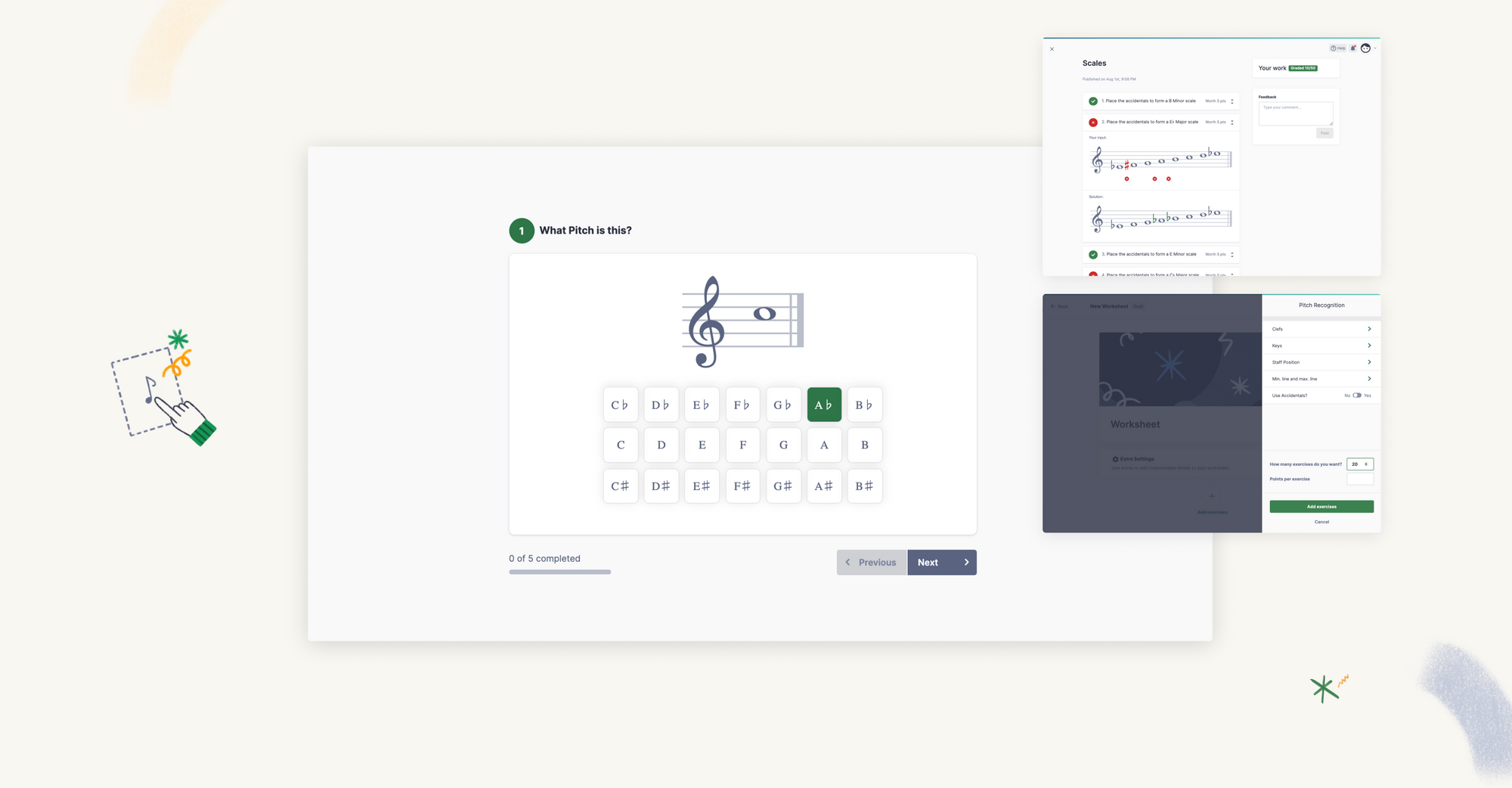
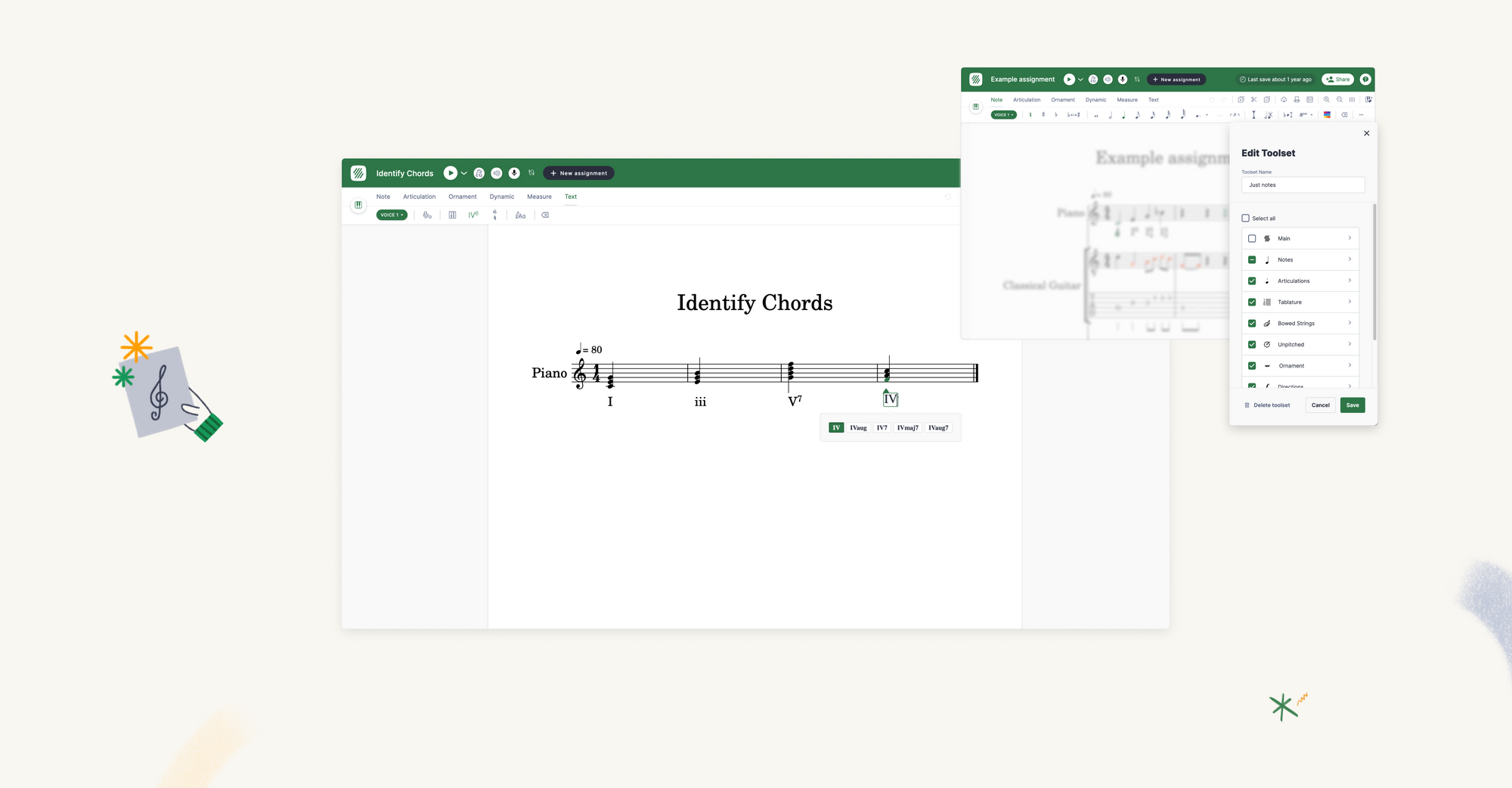
Worksheet and composition assignments in Flat for Education
Jo uses a building block approach to make sure each lesson contributes to the long-term plan. Starting with Year 7, her students focus on key projects that guide their study throughout the year. This is how she organizes herself:
- Year 7: Ensemble: Orchestra Instruments + Theme & Variation, Classical Period
- Year 8: Film: Haunted House + TV: Form & Devices
- Year 9: Film: Chase scene
- Year 10: GCSE preparation
Over the past few years, Jo’s Resource Library has greatly expanded as she started using Flat for Education with more classes. That has also provided ways to be even more efficient, with students learning and practicing more musical concepts more quickly. She’s even built an “Allegro” program for advanced students that lets them develop their skills at their own (faster) pace.
💡 In case you want to learn more about our Resource Library and get some ideas on how to make the most out of this tool, check our guide below:
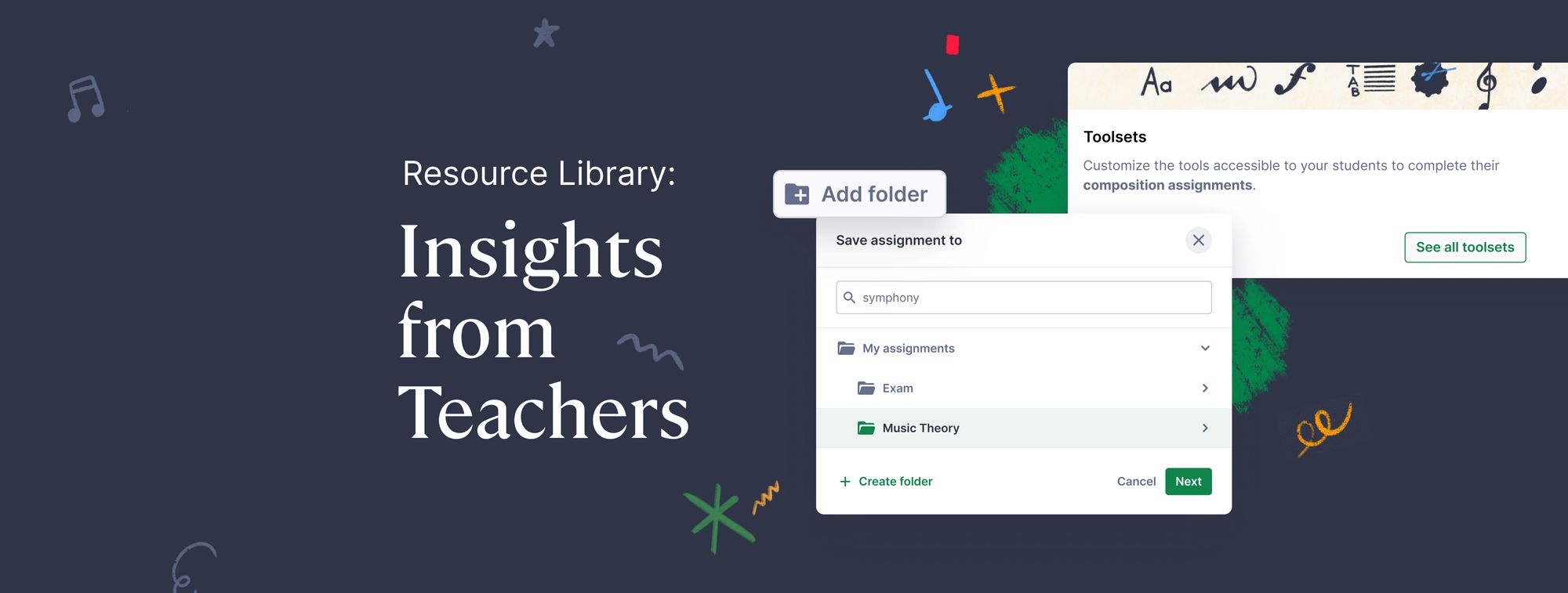
“I first started using Flat with my Year 11 students, creating composition resources during lockdown. We knew what they needed for the exam – pedal, drone, notes, scales – so I taught those skills using a set of composition exercises, the Haunted House. Now I’m using that same Haunted House program with my Year 8 class.”
Let's delve into what Jo calles the ''Haunted House'' lesson.
The Haunted House Project: A Case Study in Creativity
The Haunted House has been a hit ever since Jo started using it. The Year 8 project aims to fulfill multiple goals: improving students’ knowledge of music notation, improving their listening skills, and having them compose their own Haunted House film music.
To get there, Jo has created 6 modules, each corresponding to one class within the semester. Each module has its own Google Slides presentation that includes explanations and tasks. These tasks, such as music theory worksheets or composition assignments, are available directly in the presentation. After reviewing the basics, students simply click their class’s link to go to the task in Flat for Education.
💡 Remember, we have a Google Add-on that enables you to synchronize your Flat for Education account to insert music snippets into your Google Slides and Docs. Want to learn more? Check it out 👇🏼
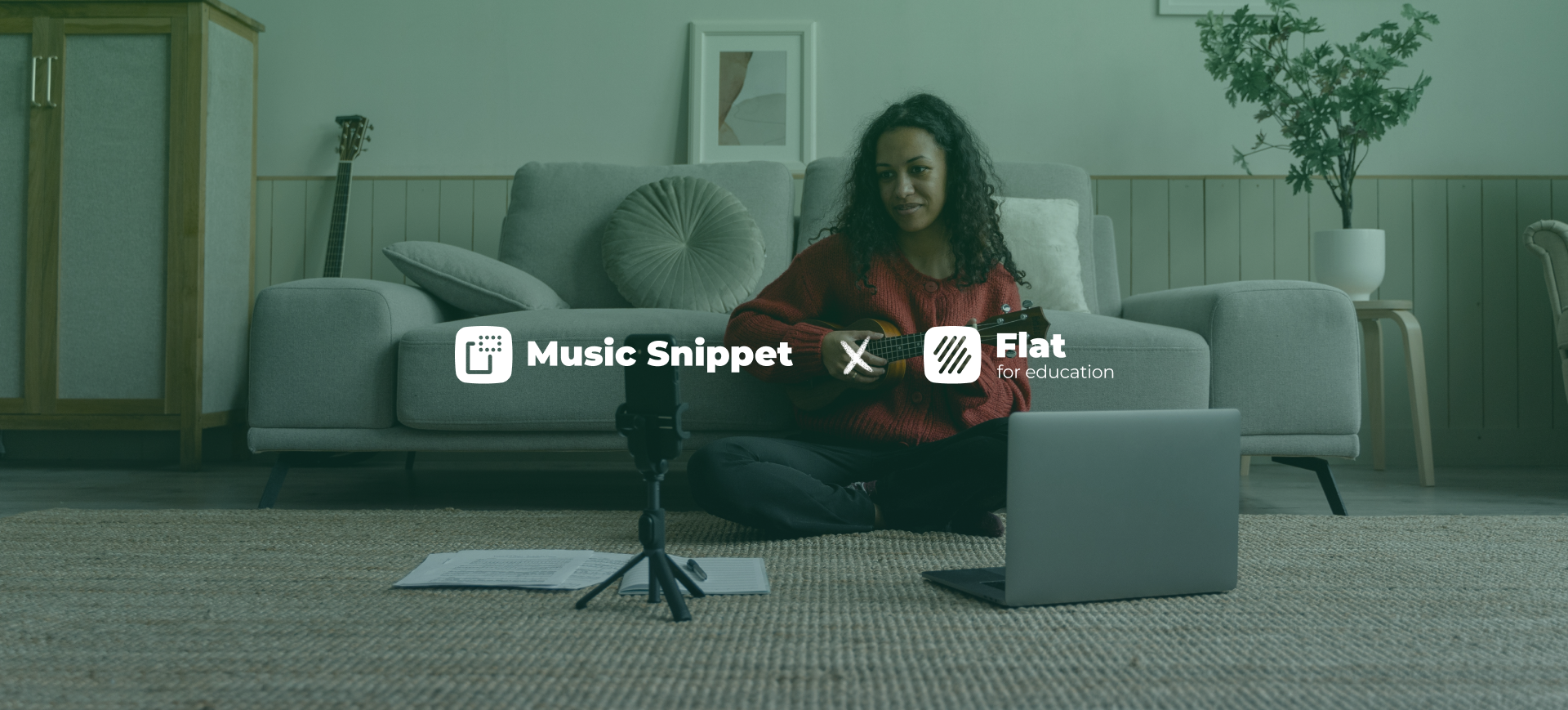
Here are a few slides from the Haunted House project Jo creates to engage the students:
The Haunted House Project: A Case Study in Creativity
As the students work on their individual computers, Jo walks around and gives personalized help as needed. Anything that isn’t completed in class can be continued at home, giving students a more consistent exposure to music education than was possible in the “before Flat for Education” era.
By linking the lessons to a larger project, Jo ensures that students see how musical theory is linked to concrete sounds. And with Flat for Education, she can easily make sure those sounds are both heard and seen via a written score. As any music teacher knows, creating this kind of link is one of the keys to keeping students engaged and learning.
“I like students to learn without realizing they’re learning, and Flat for Education’s music exercises give that: having the letters in the notes, the different color noteheads, Boomwhackers… It lets us focus on composing, not just learning the notes.”
Boosting GCSE Exam Success with Progressive Music Education Techniques
Building on how Flat for Education has changed the way students prepare for their GCSE music exams, it's clear that modern music education methods play a crucial role in shaping both their academic results and their creative selves. From Year 7, Jo's students have been using this platform, moving away from old-school teaching styles. This long-term use has deepened their understanding of music theory, composition, and performance, which are key to doing well in their GCSEs. The regular practice with interactive music exercises has not just improved their knowledge but also built their independence and confidence in music.
Jo's innovative use of Flat for Education's wide range of tools has been key to this change. By bringing technology into her teaching, Jo has opened up new ways for students to interact with music. The platform's support for instant feedback, group work, and personalized learning means that each student gets attention tailored to their needs and abilities. This focused approach makes sure students are truly ready for their exams, understanding the material in a way that connects with their own musical journey.
Moreover, the progress of Jo's Year 10 students highlights the benefits of combining technology with music education. As they head into their GCSE exams, they're armed with a rich set of musical skills, gained through years of interactive learning. This prepares them for success in their exams while giving them a strong base for any musical paths they might take in the future.
The Year 10 students is Jo’s first batch of students that have used the platform for that long. And even before the exams start, for Jo the verdict is already in:
“The difference in their compositions is phenomenal, it really is.”
Many thanks to Jo for joining us and sharing a look at her musical classroom 🎼 🎼 If you’d like to find out more about how Flat for Education could transform your teaching routine, check out its full list of features here.
